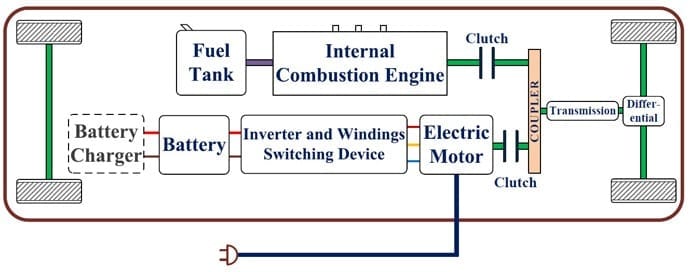Professor Weimin Chen and his colleagues at Linköping University, in cooperation with German and American researchers, have succeeded in both initializing and reading nuclear spins, relevant to qubits for quantum computers, at room temperature.
A quantum computer is controlled by the laws of quantum physics; it promises to perform complicated calculations, or search large amounts of data, at a speed that exceeds by far those that today’s fastest supercomputers are capable of.
“You could say that a quantum computer can think several thoughts simultaneously, while a traditional computer thinks one thought at a time,” says Weimin Chen, professor in the Division of Functional Electronic Materials at the Department of Physics, Chemistry and Biology at LiU, and one of the main authors of the article in Nature Communications.
A traditional computer stores, processes and sends all information in the form of bits, which can have a value of 1 or 0. But in the world of quantum physics, at the nano- and atomic level, other rules prevail and a bit in a quantum computer – a qubit – can have any value between 1 and 0. A spin-based qubit makes use of the fact that electrons and atomic nuclei rotate around their own axes – they have a spin. They can rotate both clockwise and counterclockwise (equivalent to 1 and 0), and in both directions simultaneously (a mix of 1 and 0) – something that is completely unthinkable in the traditional, “classical” world.
An atomic nucleus consists of both protons and neutrons, and the advantage of using the nuclear spin as a qubit is that the nucleus is well protected, and nearly impervious to unwanted electromagnetic disturbance, which is a condition for keeping the sensitive information in the qubit intact.
The first step in building a quantum computer is to assign each qubit a well-defined value, either 1 or 0. Starting, or initiating, the spin-based qubits then requires all the atomic nuclei to spin in the same direction, either ‘up’ or ‘down’ (clockwise or counterclockwise). The most common method for polarising nuclear spin is called dynamic nuclear polarisation; this means that the electrons’ spin simply influences the nucleus to spin in the same direction. The method requires strongly spin polarised electrons and functions superbly at lower temperatures. Dynamic nuclear polarisation via conduction electrons has, however, not yet been demonstrated at room temperature – which is crucial for the method to be useful in practice for the development of quantum computers. The main problem is that the spin orientation in the electrons can easily be lost at room temperature, since it is sensitive to disruptions from its surroundings.
Linköping University researchers Yuttapoom Puttisong, Xingjun Wang, Irina Buyanova and Weimin Chen, together with their German and American colleagues, have now discovered a way of getting around this problem.
The Latest Bing News on:
Quantum computer
- The end of the quantum tunnel: Exact instanton transseries for quantum mechanicson April 26, 2024 at 10:46 am
In the quantum world, processes can be separated into two distinct classes. One class, that of the so-called "perturbative" phenomena, is relatively easy to detect, both in an experiment and in a mathematical computation.
- Why Your Company Needs To Assess Its Quantum Computing Vulnerabilities Nowon April 25, 2024 at 7:22 am
Although current knowledge causes most companies to expect that cybersecurity vulnerability and threats from quantum computing will be way out in the future, those expectations are incorrect. Companies need to conduct vulnerability assessments and move to quantum proofing against future issues now.
The Latest Google Headlines on:
Quantum computer
[google_news title=”” keyword=”quantum computer” num_posts=”10″ blurb_length=”0″ show_thumb=”left”]
The Latest Bing News on:
Quantum Computing
- Unveiling a new quantum frontier: Frequency-domain entanglementon April 26, 2024 at 9:03 am
Scientists have introduced a form of quantum entanglement known as frequency-domain photon number-path entanglement. This advance in quantum physics involves an innovative tool called a frequency beam splitter,
- Why Your Company Needs To Assess Its Quantum Computing Vulnerabilities Nowon April 25, 2024 at 7:22 am
Although current knowledge causes most companies to expect that cybersecurity vulnerability and threats from quantum computing will be way out in the future, those expectations are incorrect. Companies need to conduct vulnerability assessments and move to quantum proofing against future issues now.
The Latest Google Headlines on:
Quantum Computing
[google_news title=”” keyword=”Quantum Computing” num_posts=”10″ blurb_length=”0″ show_thumb=”left”]











